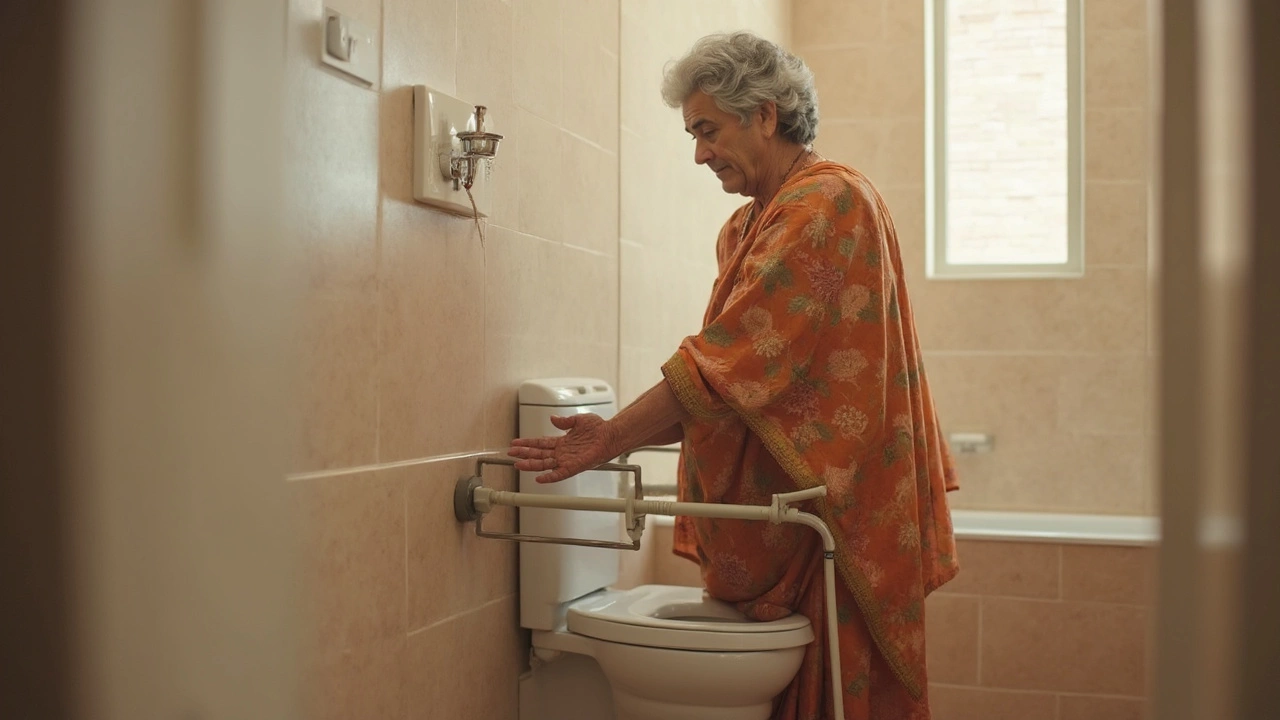Pee After Knee Replacement: What to Expect and How to Manage
When dealing with pee after knee replacement, the urge to urinate or difficulty doing so following knee surgery, also known as post‑operative urinary issues, many patients wonder if it’s normal or a warning sign. This condition often ties back to knee replacement surgery, a procedure that reshapes the joint to relieve pain and improve mobility. Understanding how the surgery impacts bladder function, the muscles and nerves that control urination can help you spot red flags early and act confidently.
One of the most common connections is post‑operative urinary retention, the temporary inability to empty the bladder after anesthesia or pain medication. The anesthetic agents used during knee replacement can relax the detrusor muscle, while opioid painkillers may blunt the urge to go. This triple effect—surgery, anesthesia, and medication—creates a perfect storm where the bladder doesn’t respond as it should. As a result, patients may experience a full bladder, urgency, or even incontinence.
Key Factors Influencing Post‑Surgery Urination
Age plays a big role. Older adults often have weaker pelvic floor muscles, making it harder to coordinate bladder emptying after a major operation. Pre‑existing conditions like diabetes or prostate enlargement add another layer of risk. Even the type of anesthesia matters; spinal blocks can numb the nerves that signal the bladder, while general anesthesia may cause lingering grogginess that delays the first bathroom trip.
Physical therapy, another vital piece of the recovery puzzle, also affects urination. Early physiotherapy, targeted exercises that restore knee range of motion can indirectly improve bladder control by encouraging movement and blood flow. However, if a patient pushes too hard too soon, pain spikes and they may hold off on bathroom breaks, worsening retention. Balancing activity with adequate rest is essential.
Hydration habits deserve attention, too. Many surgeons advise limited fluids the night before surgery to reduce the need for nighttime bathroom trips. After the operation, though, staying well‑hydrated supports healing and prevents concentrated urine, which can irritate the bladder lining. Aim for steady fluid intake—small sips every hour—rather than gulping large amounts all at once.
Medication management is a practical lever you can control. If you’re on opioids, ask your doctor about alternatives or lower doses. Non‑opioid pain relievers, like acetaminophen or NSAIDs, often provide sufficient relief without compromising bladder signals. Some hospitals also use bladder scanners to monitor residual urine volume; this tool can catch retention before it leads to infection.
Psychological factors, surprisingly, influence the urge to pee. Anxiety about surgery outcomes can tighten pelvic muscles, creating a functional blockage. Simple breathing exercises or short meditation sessions can relax those muscles and restore a normal voiding pattern.
When should you be alarmed? Persistent inability to urinate within 6‑8 hours post‑op, a feeling of a constantly full bladder, or pain during urination all signal that medical intervention is needed. In such cases, a temporary catheter may be placed to drain the bladder and prevent over‑stretching, which can cause lasting damage.
Recovery timelines vary, but most people regain normal bladder function within a few days once anesthesia wears off and pain meds are tapered. If you notice improvement after the first 24‑48 hours, keep tracking fluid intake, bathroom frequency, and any discomfort. Documenting these details helps your care team fine‑tune your plan.
Finally, lifestyle tweaks can speed up the return to normalcy. Gentle walking improves circulation, which aids both knee healing and bladder health. A balanced diet rich in fiber prevents constipation—a common culprit that puts pressure on the bladder. And don’t forget to practice the “double‑void” technique: urinate, wait a few minutes, then try again to ensure the bladder empties completely.
By understanding how pee after knee replacement links to surgical factors, medication effects, and everyday habits, you can take proactive steps to avoid complications. The articles below dive deeper into each aspect—walking timelines, pain management, medication choices, and more—so you’ll have a clear roadmap for a smoother, healthier recovery.

Peeing After Knee Replacement: Tips for a Smooth Recovery
Struggling to use the loo after knee replacement? Discover how to pee with less pain and risk, plus real tips for handling bathroom visits safely post-surgery.
read more



